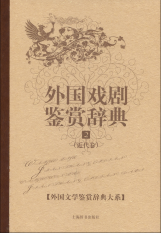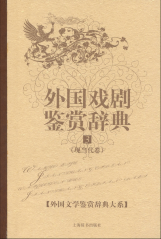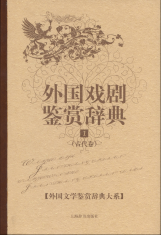
主要责任者: 刘亚丁;李兵,苏玲
责任方式: 主编;副主编
出版者: 上海辞书出版社
出版地: 上海
字数: 1293 千字
页码: 1-1238
开本: 32
中图分类号: I106.3-61
装帧: 精
分辑名:二 近代卷
语种:中
定价:75.00
出版时间:2010-03
丛书多卷书否:是
丛书名:外国文学鉴赏辞典大系
书目简介:本册工具书是外国文学鉴赏辞典大系之一,共收录84条词条。

主要责任者: 宫宝荣
责任方式: 主编
出版者: 上海辞书出版社
出版地: 上海
字数: 1469 千字
页码: 1-1432
开本: 32
中图分类号: I106.3-61
装帧: 精
分辑名:三 现当代卷
语种:中
定价:80.00
出版时间:2010-04
丛书多卷书否:是
丛书名:外国文学鉴赏辞典大系
书目简介:本册工具书是外国文学鉴赏辞典大系之一,共收录100条词条。
被引频次:5

主要责任者: 郁龙余;杨晓霞
责任方式: 主编;副主编
出版者: 上海辞书出版社
出版地: 上海
字数: 1402 千字
页码: 1-1303
开本: 32
中图分类号: I106.3-61
装帧: 精
分辑名:一 古代卷
语种:中
定价:78.00
出版时间:2009-12
丛书多卷书否:是
丛书名:外国文学鉴赏辞典大系
书目简介:本册工具书是外国文学鉴赏辞典大系之一,共收录95条词条。
被引频次:2